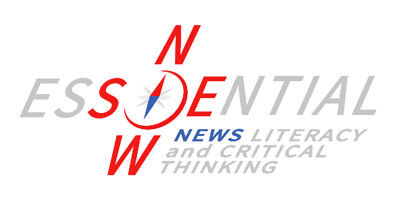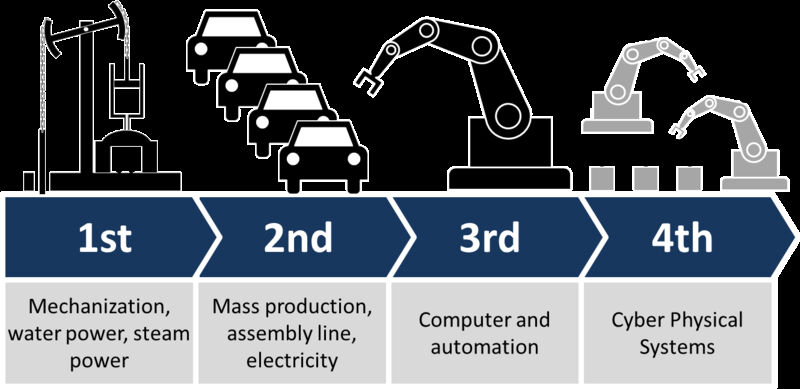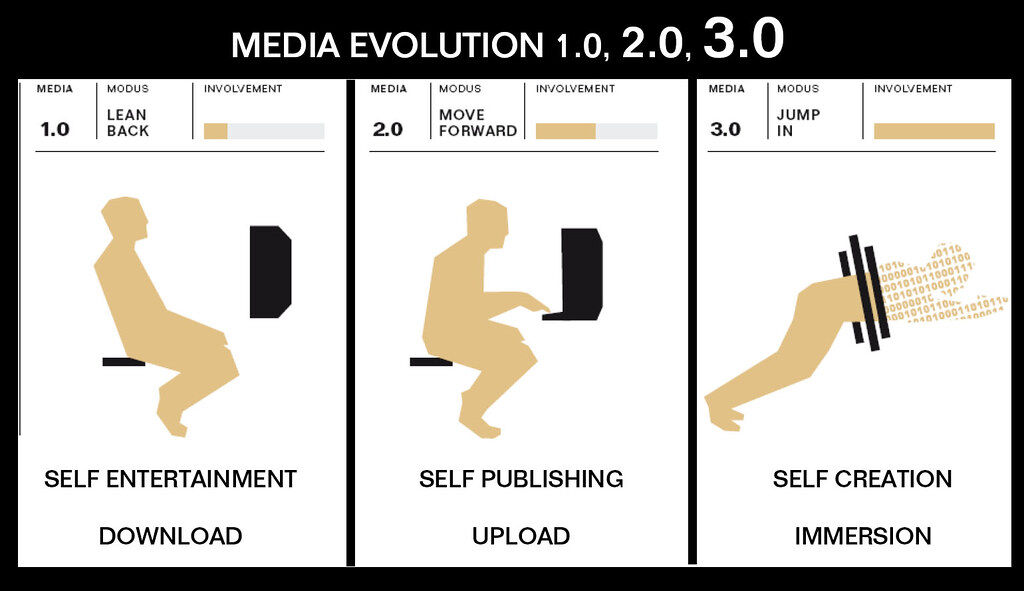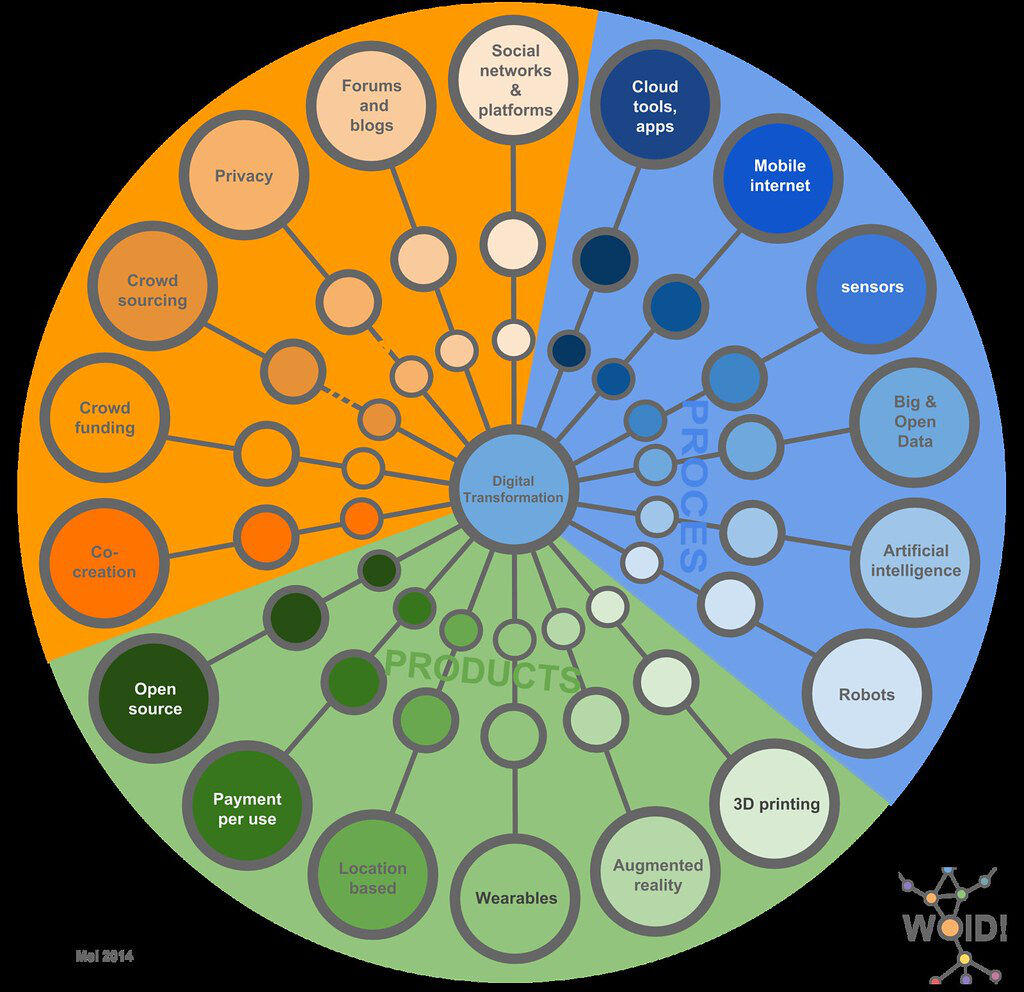Trainees Edition
Trainers Edition
Trainees Edition
Trainers Edition

Module 9: Changing Media Environment
Module Description
The main purpose of this Module is to present an overview of the digital revolution and new media tools and the effects of this new ecosystem on people. The secondary aim is to guide trainers who want to use the content of this Module to train their trainees. To be able to understand the digital transformation that the societies are facing also helps to evaluate the people’s new roles in the changing media environment.
With these aims, this module covers the meaning and brief history of digital revolution, the definition and characteristics of new media and the effects of digital transformation on people and societies.
Trainees who successfully complete this module will be able to:
- understand digital revolution
- give examples of new media platforms
- understand the characteristics of new media
- understand the effects of digital transformation
Additionally, trainers who successfully complete this Module, will be able to demonstrate an understanding of how to teach the definition and effects of digital revolution and changing the new media environment.
Module Structure
This Module consists of the following parts:
- Module Description (objectives, description of the content and learning outcomes)
- Module Structure
- Guidelines for Trainees
- Guidelines for Trainers (how to get prepared, methods to use and tips for trainers)
- Content (study materials)
- Quiz
- Resources (references and recommended sources and video)
Main objectives of the module, description of the content and the learning outcomes are explained in the Module Description part. Content includes all study materials. Quiz includes multiple choice or true/false questions for trainees to test their progress. Resources have two components: references and recommended resources for further study. References is the list of resources cited in the content part. Recommended sources consist of a list of supplemental sources and videos which are highly recommended to read and watch for learning more on the topic. Guidelines for Trainees includes instructions and suggestions for trainees. Guidelines for Trainers leads trainers through different phases of the training and provides tips which could be useful while teaching the subject.
Guidelines for Trainees
Trainees are expected to read the text, watch the recommended video. They can consult suggested sources for further information. After completing the study of the content trainees are strongly suggested to take the quiz to evaluate their progress. They can revise the study material when and if needed.
Guidelines for Trainers
Guidelines for trainers includes suggestions and tips for trainers about how to use the content of this Module to train people on the changing media environment and its effects.
Getting Prepared
Preparing a presentation (PowerPoint/Prezi/Canva) which is enriched with images and factual information (evidence) is strongly suggested. Presenting more relevant examples of new media for a specific age or interest group helps them to illustrate the content more clearly.
Getting Started
A short quiz (3 to 5 questions) in Kahoot or questions with Mentimeter can be used at the beginning for engaging participants in the topic. It can be used as a motivation tool as well as a tool to check trainees’ existing knowledge and awareness about the subject.
Methods to Use
Various teaching methods can be used in combination during the training. Such as:
- Lecturing
- Discussion
- Group work
- Self reflection
Tips for Trainers
Warming-up
An effective way of involving participants and setting common expectations about what they will learn is to ask a few preliminary questions on the subject. For instance you can ask trainees if they feel any sharp changes in their information or media consumption environments and if any, ask them to describe their effects on them.
Presenting the Objective of the Lesson
The objective of the lesson should be made clear (which is to develop an understanding of digital revolution, new media platforms and their characteristics, the effects of digital transformation). Following the warming-up questions it will be easier to clarify the objectives.
Presenting the Lesson Content
While presenting the content make sure to interact with the trainees and encourage them for active participation.
- Before providing an overview of the digital revolution, ask participants to elaborate on it.
- Before providing an overview of the new media environment and its characteristics, ask participants to elaborate on it.
- While presenting the effects of changing media environment, encourage the participants to think and discuss their experiences.
Concluding
Make a short summary of the lesson and ask a couple of questions which underline the most important messages you planned to give.
- Ask trainees whether being aware of the new media environment raise their awareness towards news related issues
After the discussions make sure that trainees understand that the changing media environment affects various aspects of human lives and is a game changer for the societies.
Content: Changing Media Environment
Introduction: Digital Revolution
The world is going through a drastic transformation which changes the way we live, work and think (Bello, Blowers, Schneegans & Straza, 2021, p. 3) as a result of a media and technological revolution that has taken place in the last 50 years.
Until today, the transformations that dominates the civil history is generally classified as follows (Inigo, Siavash & Mika, 2017; Schwab, 2016):
- 1st Industrial Revolution (1800’s): Steam, water and mechanical production.
- 2nd Industrial Revolution (1900’s): Division of labour, electricity and mass production.
- 3rd Industrial Revolution (1970’s): Electronics, information and communication technologies and automated production.
“The Fourth Industrial Revolution heralds a series of social, political, cultural, and economic upheavals that will unfold over the 21st century. Building on the widespread availability of digital technologies that were the result of the Third Industrial, or Digital, Revolution, the Fourth Industrial Revolution will be driven largely by the convergence of digital, biological, and physical innovations. ...More importantly, this revolution will be guided by the choices that people make today: The world in 50 to 100 years from now will owe a lot of its character to how we think about, invest in, and deploy these powerful new technologies.” (Schwab, 2021)
Today, with the diffusion of digital technologies and emerging breakthrough technologies such as biotechnology, nanotechnology, artificial intelligence, robotics, the Internet of Things (IoT), three-dimensional (3D) printing, and quantum computing, this technological and social transformation is associated with the “4th Industrial Revolution'' (or Industry 4.0). These technologies can be described as disruptive innovations, since they disrupt every industry in the global economy, leading to the transformation of entire systems of production, management and governance (Knell, 2021, p. 10-11). In this new environment, artificial intelligence (AI), robotics, nanotechnology, 3D printing, genomics, biotechnology and cognitive sciences are becoming increasingly imbricated, improving and strengthening one another (Bello, Blowers, Schneegans & Straza, 2021, p. 3). These technologies are also changing the way humans create, exchange, and distribute value rapidly. Similar to previous revolutions, the 4th Industrial Revolution is expected to greatly transform institutions, industries, and individuals and involves a systemic change across many sectors and aspects of human life (Schwab, 2021).

"Industry 4.0" by Christoph Roser at AllAboutLean.com is licensed under CC BY-SA 4.0
What is “New” About “New Media”?
Media was described in 1964 by Marshall McLuhan as “the message” (McLuhan, p. 203) and the definition in today’s dictionaries is “the main ways that large numbers of people receive information and entertainment, that is television, radio, newspapers and the internet” (“Media”, n.d.). In the pre-literate, ancient or pre-technological cultures, carved rocks, cave paintings, sculptures, etc. were used as a medium by humans to express themselves or record any message (Jabusch, 1992). In the mid 15th century, Gutenberg invented the printing press and this paved the way for the books to become the most important and extensive medium to spread any message, idea or information. This was followed by the introduction of digital printing methods in the 1980s (Lister, Dovey, Giddings, Grant & Kelly, 2009, p. 17) and Internet and smartphones in the 2000s.
“And as new communications technologies appear, the terrain of this battlefield shifts. From Johannes Gutenberg’s printing press to the telegraph and from radio to television, new technologies have spread information faster and farther — in new and dramatic ways.” (Hornik, Anzalone & Spikes, 2018, p. 23)
When computers started to become widespread, they were mostly used to produce business or official documents. Then, computers started to have multimedia features like audio and video. The opportunity to store and/or view audio and video files into a computer have furnished computers with entertainment facilities. The proliferation of the internet boosted the impact of this new medium. Instead of CDs, DVDs and cable TV, the Internet became the music source to stereo systems and the video source to TVs first via computers, then smartphones. Today, smartphones and mobile applications are widely used for listening to music, watching movies or digital video contents, taking photographs, making audio or video meetings with people, browsing the internet and so on (“Digital convergence”, n.d.). The convergence of entertainment and technology have changed related industries (such as TV broadcasting, newspaper publishing etc.) forever (Kipp, 2004, b. vi).

"Mobile Information Technology I Use Every Day" by Steve Wilhelm is licensed under CC BY-NC-SA 2.0
The concept of “new media” does not necessarily refer to a specific mode of communication. Its definition is constantly changing due to the rapid development of technology. For example some types of media such as “newspaper” could be both examples of new and old media since it could have both printed and online versions. On the other hand, a podcast or a smartphone can entirely be counted as new media since it does not have an exact “traditional” counterpart. So, today, the definition of new media can be made as “any media from a website, e-mail or blog to mobile phones, streaming apps or any internet-related form of communication that are delivered digitally” (Cote, 2020). What is new about new media comes from some distinctive ways in which they reshape traditional (older) media and the ways in which traditional media refashion themselves to stand to the challenges of new media (Bolter & Grusin, 2000, p. 15).
By the end of the first decade of the millennium, the migration of content and intellectual property across media forms was clearly visible. For example, the concept of TV had been challenged by digital streaming platforms, the boundaries among job descriptions had blurred. (such as in the rise of the “citizen journalist”), the target had shifted from “audience” to “users” and from “consumers” to “producers”. However, it should be noted that such changes in the forms, production, distribution, and consumption of media is more complex than the implied division into the “old” and “new” suggest (Lister, Dovey, Giddings, Grant & Kelly, 2009, p. 9-10). It is better to see “new media” as a combination of the following (Lister, Dovey, Giddings, Grant & Kelly, 2009, pp. 12-13):
- New textual experiences: New types of textual forms, entertainment, pleasure and new patterns of media consumption (such as computer games, simulations, 3D movies).
- New ways of representing the world: Media that offers new representational possibilities and experiences in ways that are not always clearly defined (e.g, immersive virtual environments, screen-based interactive multimedia).
- New relationships between subjects (users and consumers) and media technologies: Changes in the use of visual and communication media in daily life and in the meanings attributed to media technologies.
- New experiences of the relationship between embodiment, identity and community: Changes in the personal and social experience of time, space, and place (on both local and global scales) that have implications for the way we experience ourselves and our place in the world.
- New conceptions of the biological body’s relationship to technological media: Challenges to distinguish the human and the artificial, nature and technology, human body and technological accessories, the real and the virtual.
- New patterns of organisation and production: Extensive evolutions and integrations in media culture, industry, economy, access, ownership, control and regulation.
The Characteristics of New Media
The term “new media” is usually used to refer to technological, textual, conventional and cultural changes in media production, distribution and use. Concepts such as digital, interactive, hypertextual, virtual, networked, and simulated come to fore when considering the characteristics of new media (Lister, Dovey, Giddings, Grant & Kelly, 2009, p. 13). These characteristics are part of a matrix of qualities that makes new media different. All these characteristics do not have to be present in all examples of new media, they may be in differing degrees in different mixes. They also are not wholly functions of technology and have cultural, social, economic aspects. For example, if we talk about the concept of virtuality, we do not only mean head-mounted display systems but also have to take into account the ways in which experiences of self and of identity are mediated in a “virtual” space (Lister, Dovey, Giddings, Grant & Kelly, 2009, p. 44).
“The new media are defined by all three characteristics simultaneously: they are media which are both integrated and interactive and also use digital code at the turn of the 20th and 21st centuries. ... Using this definition it is easy to identify media as old or new. For example, traditional television is integrated as it contains images, sound and text, but it is not interactive or based on digital code. The plain old telephone is interactive, but not integrated as it only transmits speech and sounds and it does not work with digital code.” (van Dijk, J., 2006, p. 9)
van Dijk (2006, pp.6-9), categorises the characteristics of new media into three main concepts, which are integration, interactivity and digital code.
Integration can be defined as the convergence of telecommunications, data communications and mass communications in a single medium which can take place at one of the following levels:
- Infrastructure (e.g. different transmission links and equipment for telephone and computer (data) communications can be combined).
- Transportation (e.g. internet telephony and web TV riding on cable and satellite television).
- Management: (e.g. a cable company that exploits telephone lines and a telephone company that exploits cable television).
- Services (combination of information and communication services on the internet).
- Types of data (combination of sounds, data, text and images).
While the first characteristic enables a complete integration of telecommunications and data communications, the second is more relevant for the integration of mass communications in the process of convergence, which is interactivity. As digital media is more interactive than traditional media, they enable a shift in the balance of power to the user and the side of demand. Interactivity can be defined in four dimensions which are space (possibility of establishing two sided or multilateral communication), time (the degree of synchronicity), behavioural (the ability of the sender and the receiver to switch roles at any moment) and mental (acting and reacting with an understanding of meanings and contexts by all interactors involved).
The third characteristic defined as digital code refers to the form of strings of ones and zeros (called bytes with every single 1 or 0 being a bit) to transform or transmit every item of information and communication while using computer technology. Transformation of all media contents (as the digitised forms of images, sounds, texts, and numerical data) in the same digital code helps the uniformity and standardisation of these contents. These digitised forms are produced using not only the same basic code but also the same languages such as HTML (hypertext markup language), a graphic code for pages of the World Wide Web (www). This code makes the production, recording, and distribution of all forms of information much easier. By the help of digital code, units of information and communication (such as texts, images, sounds, audiovisual programs) can be transformed into hyperlinks of items that can be transformed into hyperlinks of items liable to be anticipated and processed in the order that the reader, viewer or listener wants.

"Media 3.0" by Cea. is licensed under CC BY 2.0
New media is sometimes also called contemporary media and it has some aspects that makes it different from its predecessors from the user perspective. These are, abundance of content and channels, mobility, interactivity and multi-mediality. As we can see from the characteristics listed so far, what forms new media is not technological aspects per se. Rather, they highlight that these media provide users a combination of the quality of both the information that is communicated and of the communication that is mediated. In other words, today’s media environment grants a more effective communication process (Schejter, Ben-Harush & Tirosh 2017, p. 238).
Social Impacts of Digital Transformation
Today, human behaviour, beliefs and relations are all rearranging themselves around connectivity. This sort of “being connected” can be analysed around following issues (Pesce 2013, pp. 430-437):
-
Hyperconnectivity: Any individual can connect with three-quarters of humanity directly.
-
Hyperdistribution: Humans' instinctive sharing behaviour is stronger than ever before, but has expanded beyond our voices to encompass communities. If what we say provokes those with whom we maintain relationships, our voice can be heard around the world.
-
Hyperintelligence: When a focal point for a particular field of knowledge occurs within the hyperdistribution in a fully hyperconnected environment, this can be called as hyperintelligence (Wikipedia is a good example of hyperintelligence).
-
Hyperempowerment: A group of hyperconnected individuals who choose to hyperdistribute their knowledge around a defined area can lead to hyperintelligence. Hyperintelligence is not static, since being involved with a hyperintelligence necessarily means using the information provided by that hyperintelligence where, when, and as needed.

"Digital Transformation" by Detlef La Grand is licensed under CC BY 2.0
Especially with the recent developments of information and communication technologies, it is argued that serious conversions occur in everyday life, and the structures and relationships on which it is based, such as the sense of individuality, consumption, the dynamics of generation and gender in families and other households, connections between the global and the local (Lister, Dovey, Giddings, Grant & Kelly, 2009, p. 7). It is emphasised in various studies that technology and digitalization reforms everything from daily lives to global economies.The technologies that were introduced in our lives with the 1st Industrial Revolution, such as the steam engine and electrification, planted the seeds of today's technological advances (Knell, 2021, p. 10-11).
“The result of all this is societal transformation at a global scale. By affecting the incentives, rules, and norms of economic life, it transforms how we communicate, learn, entertain ourselves, and relate to one another and how we understand ourselves as human beings. Furthermore, the sense that new technologies are being developed and implemented at an increasingly rapid pace has an impact on human identities, communities, and political structures.” (Schwab, 2021)
The digital revolution is indeed the most important development in information dissemination since Gutenberg’s printing press and conceivably marks a much bigger shift in human communication (Clarke, 2012, p. 79). Like all previous revolutions, today’s information and media environment have positive and negative impacts on different stakeholders. While some nations have become wealthier as a result of this transformation, some global challenges have also been observed because of the inability to fairly distribute these benefits. On the other hand, some risks have also emerged, such as cybersecurity threats, misinformation, potential unemployment or increasing social and income inequality. Despite all, if necessary actions can be taken to align common human values with these technological developments it is argued that humanity could benefit from the 4th Industrial Revolution more than ever in history (Schwab, 2021).
Exercises
- Can you think of any examples of “new media” platforms, devices, tools etc. that you use in your daily life?
- When you consider the characteristics of new media (integration, interactivity and digital code), what makes new media appealing or useful or if so indispensable for you?
Quiz
References
Bello, A., Blowers, T., Schneegans, S. & Straza, T. (2021). To be Smart, the Digital Revolution will Need to be Inclusive: Excerpt from the UNESCO Science Report. Retrieved from https://unesdoc.unesco.org/ark:/48223/pf0000375429.
Bolter, J. D. & Grusin, R. (2000). Remediation: Understanding New Media. Massachusetts: MIT Press.
Clarke, M. (2012). The digital revolution. In Campbell, R:, Pentz, E. & Borthwick, I. (Eds.), Academic and Professional Publishing (pp. 79-98). Oxford: Chandos Publishing.
Cote, J. (2020). What is New Media? Retrieved from https://www.snhu.edu/about-us/newsroom/liberal-arts/what-is-new-media.
Digital convergence. (n.d.). In PCMag Encyclopedia. Retrieved from https://www.pcmag.com/encyclopedia/term/digital-convergence.
Hornik, R., Anzalone, J. & Spikes, M. (2018). GetNewsSmart: A Guide to Understanding the Key Concepts of News Literacy. New York: The Center for News Literacy.
Inigo F, Siavash H, Mika S (2017). Current and future business models for 3D printing applications. In Ballardini M., Norrgard M., Partanen J. (Eds.), 3D Printing, Intellectual Property and Innovation: Insights from Law and Technology (pp. 33-62). Alphen aan den Rijn: Wolters Kluwer. Retrieved from https://www.researchgate.net/publication/321384439_Current_and_Future_Business_Models_for_3D_Printing_Applications.
Jabusch, D.M. (1992). Communication Media in Ancient Cultures. Retrieved from https://files.eric.ed.gov/fulltext/ED349593.pdf.
Kipp, S. (2004). Broadband Entertainment: Digital Audio, Video, and Gaming in Your Home. Colo: Broadband Entertainment.
Knell, M. (2021). The digital revolution and digitalized network society. Review of Evolutionary Political Economy, 2: 9–25. Retrieved from https://doi.org/10.1007/s43253-021-00037-4.
Lavopa, A. & Delera, M. (2021, Janurary). What is the Fourth Industrial Revolution? Retrieved from https://iap.unido.org/articles/what-fourth-industrial-revolution.
Lister, M., Dovey, J., Giddings, S., Grant, I. & Kelly, K. (2009). New Media: A Critical Introduction. London: Routledge.
McLuhan, M. (2003). The medium is the message. In Wardrip-Fruin, N. & Montfort, N. (Eds.), The New Media Reader. Massachusetts: MIT Press.
Media (n.d.). In Oxford Learner’s Dictionary. Retrieved from https://www.oxfordlearnersdictionaries.com/definition/english/media?q=media.
Pesce, M. (2013). The New Media Toolkit. In J. Hartley, J. Burgess & A. Bruns (Eds.). A Companion to New Media Dynamics (pp. 427-438). West Sussex: Blackwell.
Schejter, A. Ben-Harush, O. & Tirosh, N. (2017). The Effect of the Transformation in Digital Media on the Digital Divide. In M. Friedrichsen & Y. Kamalipour (Eds.), Digital Transformation in Journalism and News Media, Media Business and Innovation (pp. 235-246). Cham: Springer.
Schwab, K. (2016, January 14). The Fourth Industrial Revolution: What it Means, How to Respond. Retrieved from https://www.weforum.org/agenda/2016/01/the-fourth-industrial-revolution-what-it-means-and-how-to-respond/.
Schwab, K. (2021, March 23). The Fourth Industrial Revolution. Encyclopedia Britannica. Retrieved from https://www.britannica.com/topic/The-Fourth-Industrial-Revolution-2119734.
van Dijk, J. (2006). The Network Society: Social Aspects of New Media. London: Sage.
Recommended Sources
Schwab, K. (2016, January 14). The Fourth Industrial Revolution: What it Means, How to Respond. Retrieved from https://www.weforum.org/agenda/2016/01/the-fourth-industrial-revolution-what-it-means-and-how-to-respond/.
Garber, M. (2010, April 7). The Gutenberg Parenthesis: Thomas Pettitt on Parallels Between the Pre-print Era and Our Own Internet Age. Retrieved from https://www.niemanlab.org/2010/04/the-gutenberg-parenthesis-thomas-pettitt-on-parallels-between-the-pre-print-era-and-our-own-internet-age/.
Recommended Video
Nieman Journalism Lab. (2010). Thomas Pettitt on the Gutenberg Parenthesis. Retrieved from https://vimeo.com/10705406.